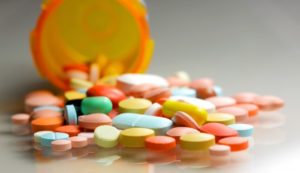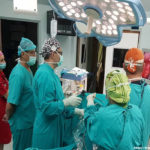 Regardless of our best attempts to stay a wholesome and toxin free life , there are occasions when sickness or damage strike. In some of these circumstances (like trauma) typical medical therapy is actually warranted and I’m definitely grateful that medical treatment is accessible if needed.
Regardless of our best attempts to stay a wholesome and toxin free life , there are occasions when sickness or damage strike. In some of these circumstances (like trauma) typical medical therapy is actually warranted and I’m definitely grateful that medical treatment is accessible if needed.
At all times inform your doctor if you are utilizing any type of herbal treatment. If you happen to really feel worse or ailing while you’re taking herbal medication, let your herbalist know in addition to your physician. It could actually additionally assist to ask your herbalist for a list of all of the elements in your natural treatment. Then if you do have any side effects, your doctor will know what you’ve gotten taken. You, or your doctor or herbalist can report the side impact to the Medicines and Healthcare Regulatory Authority (MHRA) The MHRA is the UK regulatory body that collects details about the uncomfortable side effects of medicine, including natural medicines.
In terms of being open together with your partner about your PMDD, you don’t have to share your deepest and darkest fears together with your particular guy or girl in case you don’t feel up to it. But by simply letting them know you feel horrible because of your PMDD, they could be more forgiving and understanding of your array of moods and less likely to take them personally.
No organization or company regulates the manufacture or certifies the labeling of herbal preparations. This means you can’t make certain that the amount of the herb contained within the bottle, and even from dose to dose, is the same as what is stated on the label. Some natural preparations are standardized, which means that the preparation is guaranteed to include a certain quantity of the active components of the herb. Nevertheless, it is nonetheless vital to ask companies making standardized natural merchandise about their product’s guarantee. It is important to speak to your doctor or an expert in herbal medication concerning the really useful doses of any natural merchandise.
Meals rich in folic acid include greens equivalent to spinach, broccoli, lettuce, turnip greens, okra and asparagus; fruits such as bananas, melons and lemons; and beans, yeast, mushrooms, beef liver and kidney, orange juice and tomato juice. Although there are many sources of this nutrient, many pregnant women weren’t getting sufficient folic acid of their diets. So in 1998, the FDA required producers so as to add folic acid to breads, breakfast cereals, flours, cornmeals, pastas, white rice, bakery objects, cookies, crackers and a few grains. Because of this, it is now almost unimaginable to become folic-acid poor.
















